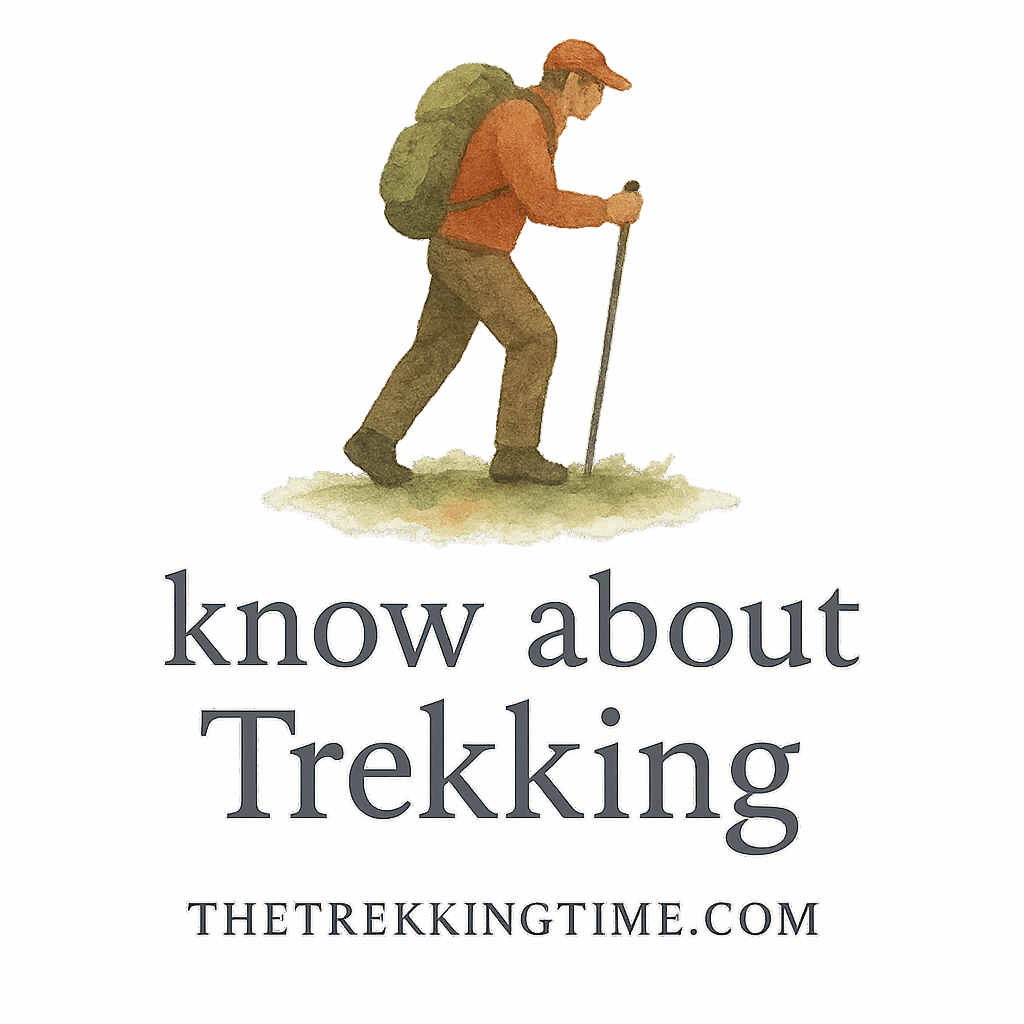Trekking is unpredictable. One minute you’re sweating in the sun, the next you’re dodging rain clouds or walking through snow. To truly enjoy your trek and stay safe, your clothing must be ready for anything nature throws your way. That’s why choosing the right trekking clothes for all weather conditions is essential.
Let’s dive into the eight must-have trekking clothing items that can handle rain, snow, sun, and everything in between — no matter where your trail leads.
Why Choosing the Right Trekking Clothes Matters
Ever had a hike ruined by soaked socks or freezing wind cutting through your jacket? Bad gear turns a dream trek into a nightmare. The right trekking clothes regulate body temperature, protect you from the elements, and keep you comfortable over long distances. It’s about performance, safety, and ultimately — enjoyment.
Read more in our guide on trekking basics for why gear matters.
Understanding Layering for All-Weather Trekking
When you layer your clothes properly, you gain the power to adapt to changing temperatures, moisture, and wind. Let’s break it down.
The Importance of the Base Layer
This is your first layer — it sits directly on your skin. Its job? Wicking sweat away. Cotton is a big no-no here. Instead, opt for materials like merino wool or synthetic blends.
The Mid Layer: Your Insulation Zone
Next up is insulation. Think of fleece or down jackets. These trap heat without adding too much bulk or weight. They’re your best friend in cold mountain air.
The Outer Layer: Your First Defense Against Weather
Your shell is your armor — waterproof, windproof, and breathable. It protects you from sudden downpours, heavy winds, or even snow.
Now let’s break down the essential 8 trekking clothes you need in your pack, categorized by function and weather adaptability.
1. Moisture-Wicking Base Layer Tops
Why They’re a Game Changer
Sweat-soaked shirts lead to chills in cold climates and discomfort in hot ones. A moisture-wicking base layer helps regulate body temp while keeping you dry.
Best Materials to Look For
- Merino wool (natural, odor-resistant)
- Polyester blends (quick-drying and durable)
- Avoid cotton — it retains moisture and can cause hypothermia in cold climates
Explore more on trekking fitness prep and why temperature regulation is key to performance.
2. Insulating Fleece or Down Jackets
What Keeps You Warm Without Overheating
Insulation is vital at higher altitudes or during cold nights. Fleece is excellent for breathability, while down offers unbeatable warmth-to-weight ratio.
Down vs. Synthetic: Which Should You Pick?
- Down: Lighter and more packable, but loses warmth when wet unless treated
- Synthetic: Slightly heavier but insulates even when damp
These options are perfect for treks across the Himalayas or other chilly mountain terrains.
3. Waterproof and Windproof Shell Jackets
What Features Matter in Harsh Conditions
Your outer layer should be fully waterproof, windproof, and breathable. Look for:
- Adjustable hoods
- Ventilation zips
- Lightweight but durable fabrics
Breathability vs. Protection
A fully sealed jacket might keep out rain but could also trap sweat. Ventilation zippers under the armpits help balance both needs.
Check out our trekking safety tips for how gear choice impacts security on the trail.

4. Convertible Trekking Pants
Flexibility for Changing Weather
These pants are brilliant — zip-off legs allow you to go from pants to shorts in seconds. Great for early morning chills that give way to midday heat.
Pockets, Fit, and Other Must-Haves
Opt for:
- Stretch fabric for freedom of movement
- Deep zippered pockets
- Quick-drying materials
These are ideal for tackling both difficult and versatile trail routes.
5. Trekking Shorts for Warm Climates
Ventilation and Comfort on Hot Days
If you’re trekking in the tropics or during summer, a good pair of lightweight, quick-drying shorts is essential. Choose materials with built-in UV protection.
Great for trails tagged under outdoors and wellness.
6. Thermal Leggings or Base Layer Bottoms
Cold Weather Essential for Leg Comfort
Just like your torso, your legs need warmth too. Thermal leggings under your trekking pants can make all the difference in frigid conditions.
- Merino or synthetic for best heat retention
- Choose flatlock seams to avoid chafing
Ideal for long-haul hikes and mountainous expeditions.
7. Trekking Gloves for All Seasons
Waterproof, Thermal, and Lightweight Options
Gloves protect against frostbite, blisters, and sunburn depending on conditions. Bring:
- Waterproof insulated gloves for cold, wet climates
- Lightweight gloves with grip for warmer treks
See our posts tagged under safety, security, and responsibility to learn how small gear choices make big safety impacts.
8. Multi-Functional Headwear and Hats
Protection Against Sun, Rain, and Cold
From balaclavas to buff-style headbands, headwear shields you from:
- Sunburn and UV exposure
- Heat loss through your head in cold weather
- Windburn and dust
It’s a small item that delivers outsized impact on your hiker performance.
Pro Tips for Dressing Smart While Trekking
Don’t Overpack, Layer Right
Bring essentials, not your whole wardrobe. Smart layering means you can mix and match to adapt to changing conditions.
Adapt Based on the Terrain and Climate
Heading to high-altitude routes or forest trails? Always check the climate and adjust your packing list accordingly. Learn more at our trekking destinations hub.
Bonus Gear to Pair With Your Trekking Outfit
Footwear, Socks, and Accessories
Don’t forget:
- Merino wool or synthetic socks to avoid blisters
- Gaiters for muddy or snowy trails
- Sunglasses and SPF lip balm for sun protection
See our gear and packing guide for the full checklist.
Conclusion
Whether you’re heading into the mountains, exploring tropical forests, or trekking through unpredictable weather, having the right clothing can make or break your experience. From layering basics to specific gear like convertible pants or gloves, being well-prepared lets you focus on the joy of the trail.
Remember: it’s not about having the most gear — it’s about having the right gear. Stay dry, stay warm, stay cool — depending on what the trail throws at you.
Want more trekking tips? Check out The Trekking Time for all things outdoors, from fitness prep to route planning and beyond.
FAQs
1. Can I wear cotton when trekking?
It’s best to avoid cotton. It traps moisture and can lead to chills or even hypothermia in cold conditions. Go for merino wool or synthetics.
2. What’s the best jacket for trekking in the rain?
A waterproof and windproof shell jacket with ventilation zips and sealed seams works best for rain and wind.
3. How many layers should I wear while trekking?
Use the 3-layer rule: base (moisture-wicking), mid (insulation), and outer (protection). Add or remove layers based on conditions.
4. What kind of pants are best for mixed weather trekking?
Convertible trekking pants are perfect — zip them off into shorts when it gets hot, and back on when it’s cold.
5. Are gloves necessary in summer treks?
Yes! Lightweight gloves protect against blisters from trekking poles and sunburn. Just pick breathable ones.
6. Should I bring both a hat and a buff?
Yes, they serve different purposes. Hats protect from the sun; buffs can cover your neck, face, or ears depending on the weather.
7. How do I maintain a good balance between packing light and staying prepared?
Use smart layering, pack multi-functional items, and follow a checklist like the one in our gear and packing guide.


